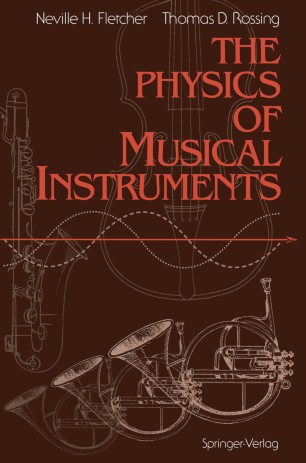Find more information about: OCLC Number: 682139022 Reproduction Notes: Electronic reproduction. [S.l.]: HathiTrust Digital Library, 2010. MiAaHDL Description: 1 online resource (xvi, 783 pages): illustrations Details: Master and use copy. Digital master created according to Benchmark for Faithful Digital Reproductions of Monographs and Serials, Version 1. Digital Library Federation, December 2002. Contents: UPDATED! VIBRATIONS, WAVES, AND SOUNDS.

What is Sound? Vibrating Systems. PERCEPTION AND MEASUREMENT OF SOUND. Sound Pressure, Power, and Loudness.
Pitch and Timbre. Combination Tones and Harmony. Musical Scales and Temperament. MUSICAL INSTRUMENTS. String Instruments. Brass Instruments.

Science of sound rossing pdf The Science of Sound, 3rd Edition Thomas D. Wheeler on Amazon.com. FREE shipping on qualifying offers. The Science.A new time. The Science of Sound is widely recognized as. Buy a cheap copy of The Science of Sound book by Thomas D. The Science of Sound is a lavishly illustrated, authoritative text that comprehensively covers the science of sound. Students of acoustics, speech and learning. Free shipping over $10.
Woodwind Instruments. Percussion Instruments. Keyboard Instruments. THE HUMAN VOICE. Speech Production. Speech Recognition, Analysis, and Synthesis. Electronic Circuits.
Microphones, Amplifiers, and Tuners. Digital Circuits and Techniques. Sound Recording. ROOM ACOUSTICS. Auditorium Acoustics. Electronic Reinforcement of Sound. Small Rooms, Home Listening Rooms and Recording Studios.
ELECTRONIC AND COMPUTER MUSIC. Music Technology and its Origins.
Analog Electronic Music. Digital Audio and Processing. Computer Music and Virtual Acoustics. ENVIRONMENTAL SOUND. Noise in the Environment. Effects of Noise on People. Control of Noise. Gazovij kotel roka instrukciya.
Responsibility: Thomas D. Richard Moore, Paul A.
Some years ago we set out to write a detailed book about the basic physics of musical instruments. There have been many admirable books published about the history of the development of musical instruments, about their construction as a master craft, and about their employment in musical perfor mance; several excellent books have treated the acoustics of musical instru ments in a semiquantitative way; but none to our knowledge had then at tempted to assemble the hard acoustic information available in the research literature and to make it available to a wider readership. Our book The Physics of Musical Instruments, published by Springer-Verlag in 1991 and subsequently reprinted several times with only minor corrections, was the outcome of our labor. Because it was our aim to make our discussion of musical instruments as complete and rigorous as possible, our book began with a careful introduction to vibrating and radiating systems important in that field.
We treated simple linear oscillators, both in isolation and coupled together, and extended that to a discussion of some aspects of driven and autonomous nonlinear oscilla tors. Because musical instruments are necessarily extended structures, we then went on to discuss the vibrations of strings, bars, membranes, plates, and shells, paying particular attention to the mode structures and characteristic frequencies, for it is these that are musically important.